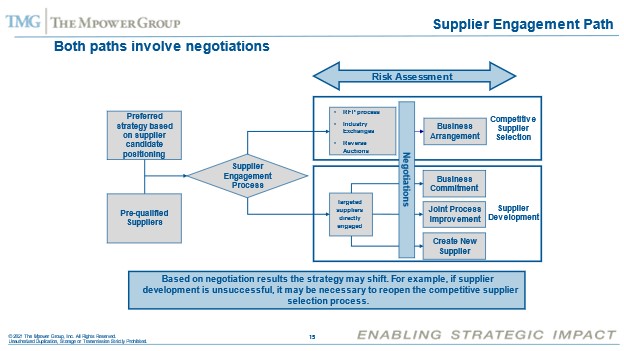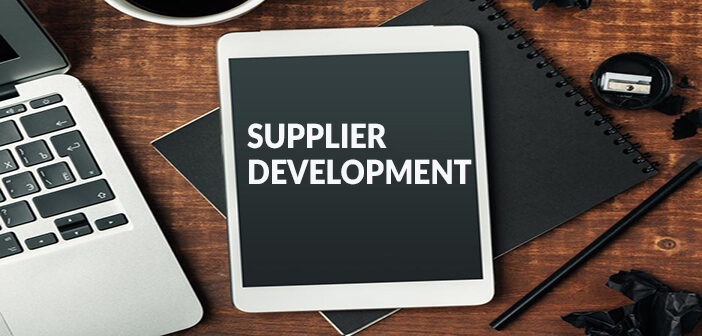This sounds counter intuitive to many people when we say this but the absolute best outcome for ANY sourcing event is that there is no change in the supplier and the incumbent maintains the business. Imagine how easy life would be and how much our stakeholders would love us. Imagine how much friction we would eliminate from the transactions and relationships in our supply chains and how much more efficient and cost effective they would become.
However, sticking with an incumbent is as stringent a process (Supplier Development “SD”) as is the tradition Sourcing process involving going to market with an RFP. In fact, the Supplier Development process can sometimes be even more arduous. Alumnus of Category Management “U” will know why that is very quickly – going down the SD path just means that we are utilizing a Reverse Hypothesis – “We can achieve our Category’s Stakeholder Value Drivers by sticking with our incumbent”-and to prove that we still must answer the SAME Key Questions. And as a reminder, both processes involve negotiations and doing all that in a noncompetitive context can be more arduous.
What makes the SD process even more challenging is that it usually may entail the following as well
- Changes to joint processes
- Shared objectives of cost, price, quality, service
- Modifications to product specifications
The reason for that is because many of the Stakeholder Value Drivers (“SVDs”) will be dependent on these elements or they will never be achieved? You can quickly also appreciate that these are not activities that our organizations are well versed in. And of course, these require significant Change Management efforts and therefore Strategic Competencies.
Of course, one of the SVDs will always be ensuring paying a competitive price and as we point out above, SD always requires negotiations. Therefore the following also need to be paid attention to:
- Negotiating power – Certainty about negotiating power to drive supplier to cooperate(remember there are no competitive threats yet)?
- Do we have a clear understanding of what a good price is? (e.g., competitive price benchmarks, “should costs target price”)
- Do we believe that we can negotiate the necessary improvements to achieve our cost targets without further competitive threat?
- Are the risks (after mitigation) associated with switching from this supplier reasonable and acceptable? (for your BATNA)
- Are the costs associated with switching reasonable and acceptable? (for your BATNA)
- What is the size of the gap between current and desired performance? Are we confident the incumbent can close that gap? This will require the same due diligence as you would in checking the capabilities of a new supplier.
- Clarity about the type of relationship desired. Getting this established and then making sure that both sides are investing the appropriate resources is always a challenge.
- Can the relationship be successfully extended and built on?
- Do our internal customers have confidence in the supplier and are they willing to continue doing business with the supplier?
- Do we know that the supplier is willing and able (or potentially able with development) to support the type of relationship we want?
- Have we clearly defined the type of relationship we want (e.g., a three-year contract, strategic alliance)
And last but not least is the challenge of Internal Readiness. Retaining an incumbent may feel like it should be easier from a Change Management perspective, but it turns out it’s just different, not easier. So absolutely you should always start with the goal of keeping the incumbent – just don’t assume it is any less work, in fact, it may be more 😊.


